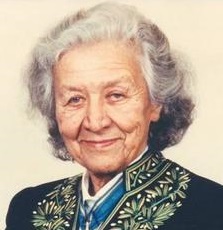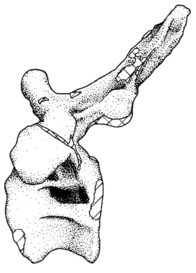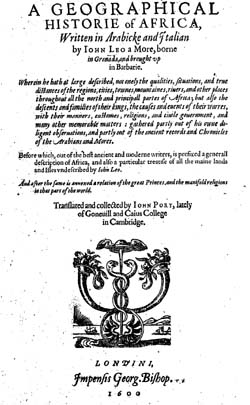
Equidae is the taxonomic family of horses and related animals, including the extant horses, asses, and zebras, and many other species known only from fossils. All extant species are in the genus Equus, which originated in North America. Equidae belongs to the order Perissodactyla, which includes the extant tapirs and rhinoceros, and several extinct families.

The white-backed vulture is an Old World vulture in the family Accipitridae, which also includes eagles, kites, buzzards and hawks. It is the most common vulture species in the continent of Africa.

Uropygi is an arachnid order comprising invertebrates commonly known as whip scorpions or vinegaroons. They are often called uropygids. The name "whip scorpion" refers to their resemblance to true scorpions and possession of a whiplike tail, and "vinegaroon" refers to their ability when attacked to discharge an offensive, vinegar-smelling liquid, which contains acetic acid. The order may also be called Thelyphonida. Both names, Uropyi and Thelyphonida, may be used either in a narrow sense for the order of whip scorpions, or in a broad sense which includes the order Schizomida. For clarity, sensu stricto or s.s. may be added to specify the narrow sense, and sensu lato or s.l. added to specify the broad sense. When these additions are omitted, the names Uropygi and Thelyphonida are ambiguous.

The common warthog is a wild member of the pig family (Suidae) found in grassland, savanna, and woodland in sub-Saharan Africa. In the past, it was commonly treated as a subspecies of P. aethiopicus, but today that scientific name is restricted to the desert warthog of northern Kenya, Somalia, and eastern Ethiopia.

Johannes Leo Africanus was an Andalusian diplomat and author who is best known for his 1526 book Cosmographia et geographia de Affrica, later published by Giovanni Battista Ramusio as Descrittione dell’Africa in 1550, centered on the geography of the Maghreb and Nile Valley. The book was regarded among his scholarly peers in Europe as the most authoritative treatise on the subject until the modern exploration of Africa. For this work, Leo became a household name among European geographers. He converted from Islam to Christianity and changed his name to Johannes Leo de Medicis.

The reed cormorant, also known as the long-tailed cormorant, is a bird in the cormorant family Phalacrocoracidae. It breeds in much of Africa south of the Sahara, and Madagascar. It is resident but undertakes some seasonal movements.

Sterkfontein is a set of limestone caves of special interest in paleoanthropology located in Gauteng province, about 40 kilometres (25 mi) northwest of Johannesburg, South Africa in the Muldersdrift area close to the town of Krugersdorp. The archaeological sites of Swartkrans and Kromdraai are in the same area. Sterkfontein is a South African National Heritage Site and was also declared a World Heritage Site in 2000. The area in which it is situated is known as the Cradle of Humankind. The Sterkfontein Caves are also home to numerous wild African species including Belonogaster petiolata, a wasp species of which there is a large nesting presence.

Australopithecus africanus is an extinct species of australopithecine which lived between about 3.3 and 2.1 million years ago in the Late Pliocene to Early Pleistocene of South Africa. The species has been recovered from Taung, Sterkfontein, Makapansgat, and Gladysvale. The first specimen, the Taung child, was described by anatomist Raymond Dart in 1924, and was the first early hominin found. However, its closer relations to humans than to other apes would not become widely accepted until the middle of the century because most had believed humans evolved outside of Africa. It is unclear how A. africanus relates to other hominins, being variously placed as ancestral to Homo and Paranthropus, to just Paranthropus, or to just P. robustus. The specimen "Little Foot" is the most completely preserved early hominin, with 90% of the skeleton intact, and the oldest South African australopith. However, it is controversially suggested that it and similar specimens be split off into "A. prometheus".

Jacqueline Worms de Romilly was a French philologist, classical scholar and fiction writer. She was the first woman nominated to the Collège de France, and in 1988, the second woman to enter the Académie française.

Tornieria is a genus of diplodocid sauropod dinosaur from the Late Jurassic in Lindi Region of Tanzania. It has a convoluted taxonomic history.

Noël Ferdinand Lionel Daunais, was a French Canadian baritone and composer.
The National Aboriginal & Torres Strait Islander Art Award (NATSIAA) is Australia's longest running Indigenous art award. Established in 1984 as the National Aboriginal Art Award by the Museum and Art Gallery of the Northern Territory in Darwin, the annual award is commonly referred to as the Telstra National Aboriginal & Torres Strait Islander Art Award, the Telstra Award or Telstra Prize. It is open to all Aboriginal and Torres Strait Islander artists working in all media.

Description of Africa was taken largely from the firsthand geographical work Cosmographia et geographia de Affrica completed by Leo Africanus in 1526 and published under the title Della descrittione dell’Africa et delle cose notabili che ivi sono by Giovanni Battista Ramusio in his collection of travellers' accounts Delle navigationi e viaggi in Venice in 1550. It contained the first detailed descriptions published in Europe of the Barbary Coast and the gold-trading kingdoms of west-central Africa. The book was dictated in Italian by Leo Africanus, the famed Moorish traveler and merchant who had been captured by pirates and sold as a slave. Presented, along with his book, to Pope Leo X, he was baptized and freed. Leo, whose name he took in baptism, suggested that he recast his Arabic work in Italian; it was completed in 1526. It was republished repeatedly by Ramusio in his Delle navigationi e viaggi, translated into French and into Latin for the erudite, both in 1556.

Jacqueline Picasso or Jacqueline Roque was the muse and second wife of Pablo Picasso. Their marriage lasted 12 years until his death, during which time he created over 400 portraits of her, more than any of Picasso's other lovers.

Australopithecus sediba is an extinct species of australopithecine recovered from Malapa Cave, Cradle of Humankind, South Africa. It is known from a partial juvenile skeleton, the holotype MH1, and a partial adult female skeleton, the paratype MH2. They date to about 1.98 million years ago in the Early Pleistocene, and coexisted with Paranthropus robustus and Homo ergaster / Homo erectus. Malapa is interpreted as having been a natural death trap, the base of a long vertical shaft which creatures could accidentally fall into. A. sediba was initially described as being a potential human ancestor, and perhaps the progenitor of Homo, but this is contested and it could also represent a late-surviving population or sister species of A. africanus which had earlier inhabited the area.
Calocheiridius is a genus of pseudoscorpions in the family Olpiidae, containing the following species:

Hypoctonus is a genus of Thelyphonid whip scorpions, first described by Tamerlan Thorell in 1888.

Thelyphonidae is the sole family in the Uropygi order of arachnids.
Jacqueline Challet-Haas was a French dancer and professor.














